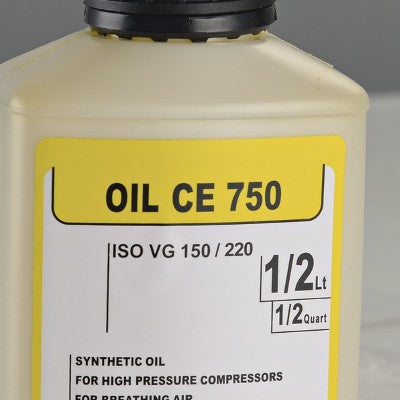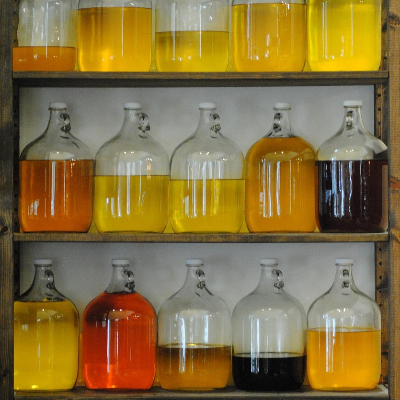Menu
-
-
F.A.Q
- How to identify genuine agarwood chip, natural or cultivated
- How to identify oil injection / absorption fake agarwood beads
- How to know if there are more than one oil in your oil
- How to make your wood bracelet or mala darker
- How to tell if an Agarwood bead sinks WITHOUT sinking it under water?
- How does back flow incense work and how do you burn it?
- Where to start if you don't know what agarwood is ?
- Why are you losing money if you buy seeds and plants?
- Which agarwood incense should I choose?
- Frequently Asked Questions
- Agarwood Related Articles
- Shipping
-
SHOP - Agarwood
-
SHOP - Other Fragrant Wood
-
SHOP - Incense Holder and Burner
-
- FREE Oud Oil guide
- Testimonials
- "Why did you buy this?"
- Contact us
- About Us
- +61430284329
- Login
-
English


Discussion: Natural and Synthetic Ingredients in fragrance: Part 2: An example of Oud
The advantage of synthetic in perfumery: nature-identical
At perfumery, one of the major technological innovation was the discovery of synthetic compounds known as nature-identical, which the main advantages are:
- The security of supply
- Lower cost
- Environment-friendly
For example, Agarwood (Oud) for instance, supply relies on hunters and mainly the nature of several decades ago. The popularity of Oud causing over-harvested making it near the brink of extinction. Therefore, to shape a sustainable future of Oud, agarwood plantation has been started since decades ago.
The challenges are variation in plant species of Aquilaria (Crassna, Malaccensis, Sinensis, Beccariana, Microcarpa, and many more) weather conditions, the method of planting, inoculation will vary the chemical composition which making the scent profile completely different. The good news is, we have more Oud scent to experience with joyfully. Each Oud oil is unique, and that may cause inconsistency.
Another challenge with natural ingredients would be the weather. Any natural disaster such as earthquake, drought or flood will wipe out many plantations.
Psychologically, when consumers purchase their favourite perfume again, usually expect the same scent profile, which is difficult to achieve with natural ingredients due to the above factor, but manageable with synthetics.
Think about safety, below are a perfect example showing that natural chemicals may not be suitable for you
Resser (2010):
"Butterbur are plants that contain an anti-inflammatory compound called petasin, which is a natural remedy for migraine treatment and prevention. Unfortunately, butterbur plants also contain pyrrolizidine alkaloids (PAs) that can cause severe liver damage, and thus it's important that butterbur extract is purified to remove PAs."
If chemical compounds could be synthesised, why aromatic botanical plants still being planted?
According to Speciality Chemical Magazine (2013)
"Diterpenoids, a group of some 7,000 compounds, exhibit antibiotic, anti-inflammatory and anti-cancer activity, but they are naturally produced in only very small amounts and are difficult to synthesise chemically, due to their complex structures."
Rose otto is another example. There are hundreds of molecules which make up its scent complexity. Its synthetic version, however, can only imitate some of them but not everything. If you provide two versions of rose to an experienced consumer, they could tell quickly by smelling it. Put it; currently, you will not be able to get the same scent profile of a plant-derived oil with synthetic oil.
The challenge of growing plants
So, I had an opportunity to discuss with Teone from TRNP about essential oil vs synthetic in fragrance. She told me a story about vanilla.
Vanilla vines take four years to grow. Their flowers only bloom one day a year. For the plants to produce vanilla beans, their flowers need to be pollinated that day. Another challenge: vanilla sometimes not natively grown. It means there would be no bugs, birds, or bees available to pollinate the plants naturally.
In Madagascar, people pollinate these vanilla's flowers by hand. The pots need several months to cure. The whole process of making vanilla bean is time-consuming.
Besides, many thieves stole mature vanilla beans and on-sold it to a buyer with a lower price. Natural disasters could wipe out a whole plantation, and if that were the case, it would take another four years to re-grow them. To sum up, it is costly to produce vanilla bean natural because It is time-consuming and labour-intensive.
Synthetically produced vanilla originated from cardboard or paper waste which were created in the lab. The cost was so much lower.
However, when it comes to smell, the synthetic version, vanillin is quite "monotone and boring"., Teone said. She mentioned that with perfume enthusiasts, they could distinguish these two effortlessly.
In case of agarwood (Oud) oil as an example, its compounds are mainly made up from terpenoids, which means per the above, a challenging task to extract or copy the same scent of Oud from the lab. There are two simplified synthetic Oud versions which are being used in several perfumeries: Firmenich and Agarbois. They are made in commercial quantities to meet the demand of Oud scent.
ese components are associated with a wide range of odors, such as sulfurous, green, sweet, fruity, almond-like, and woody, among others. For each compound, a relative peak area percentage is provided for the oils in which it was detected. This percentage likely indicates the relative concentration of each compound in the oils.
Notably, the compound b-agarofuran was found in high concentrations in all three oils (32.8% in Mal, 25.6% in Sub, and 41.1% in Cra). 4-phenyl-2-butanone was another major component, especially in Sub (18.4%) and Mal (9.5%).
This information can be used for several applications, such as quality control, authentication of these essential oils, or product formulation in industries like perfumery or food and beverages. I have summarised 9 of the components
1. Dimethyl Sulfide: This compound has a sulfurous odor, reminiscent of vegetables. It's detected in small amounts in A. crassna essential oil (0.7%).
2. 2-Hexanol: This has a green, bitter aroma with hints of almond and mushroom, present in A. malaccensis essential oil (33%).
3. 1,3,5-Cycloheptatriene: Known for its sweet smell, it's detectable in A. crassna essential oil (0.3%).
4. Pentanol: It emits a green, fruity odor and is found in trace amounts in A. crassna essential oil (0.1%).
5. Hexanal: This compound offers a green, grassy scent and is found in both A. malaccensis (9.8%) and A. subintegra essential oils (1.4%).
6. Kusunol: Possesses a woody, burnt aroma and is present in all three oils, highest in A. malaccensis (3.1%).
7. Acorenone B: Exhibits a warm, spicy, and woody smell and is detectable in all three oils, with the highest presence in A. subintegra (0.8%).
8. Selina-3,11-dien-14-al: Identified by its woody aroma, it's found in minute amounts in A. subintegra and A. crassna essential oils (0.1%).
9. 9,11-Eremophiladien-8-one: Known for its smoke, woody smell, it's present in A. subintegra and A. crassna essential oils in small amounts (0.1%).
In summary, the A. malaccensis, A. subintegra, and A. crassna essential oils contain numerous odour-active compounds that exhibit a variety of scents. These aromas range from sulfurous, green, and grassy to sweet, fruity, and almond-like in the earlier compounds. Further down the list, more robust and earthy tones such as woody, burnt, smoky, and spicy scents become more prominent. It's also notable that different compounds are more prevalent in specific oils. For example, A. malaccensis essential oil shows a high presence of hexanal and kusunol, while A. subintegra has a substantial amount of acorenone B. A. crassna, on the other hand, exhibits a more balanced distribution of these odour-active compounds.
Leave a comment
Comments will be approved before showing up.
Also in News

What is Tasbih? The Deep Meaning of Subhan Allah and the Role of Prayer Beads
November 09, 2025 4 min read


